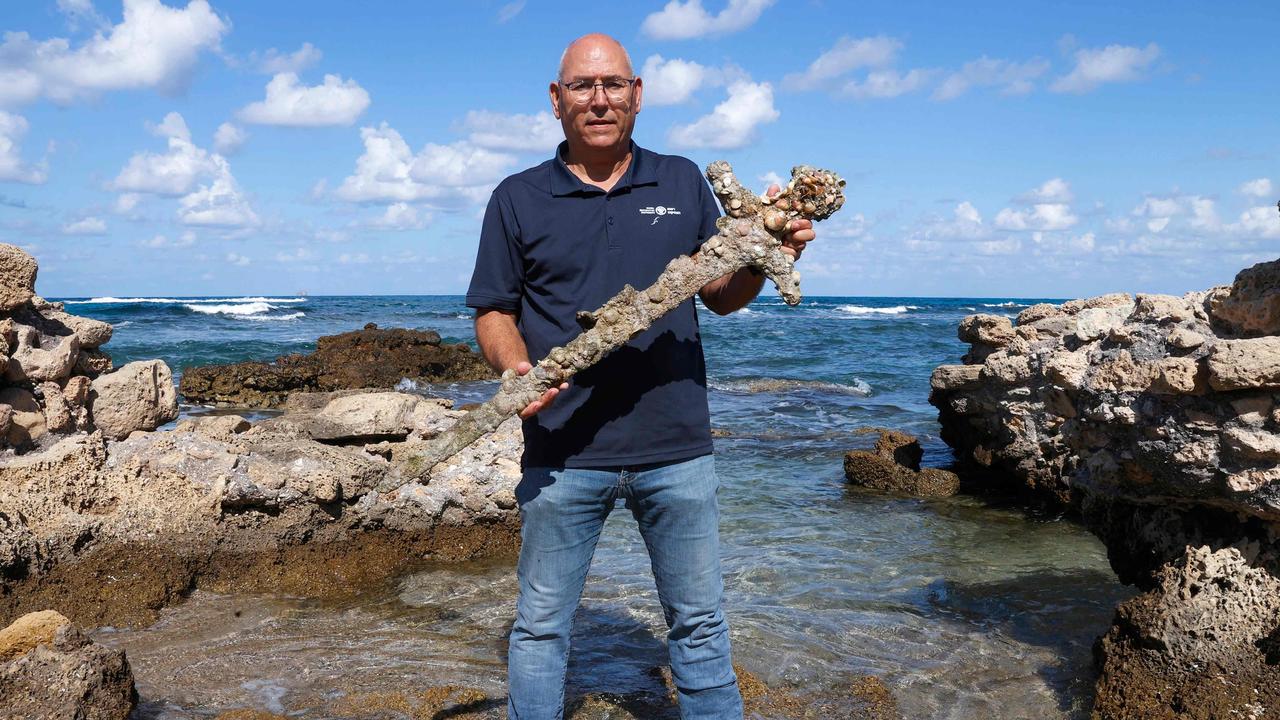Scuba diver discovers sword dating back to the Crusades in Israel
A stunned scuba diver discovered a “beautiful and rare” treasure dating back to the Crusades during a routine trip on the weekend.

A shocked scuba diver has found an ancient sword that experts say dates back to the Crusades.
The artefact, which is believed to have been dropped on the journey to the Holy Land some 900 years ago, was discovered by Shlomi Katzin near the port city of Haifa, Israel on the weekend.
He was operating in an area frequently visited by divers – roughly 200 metres out at sea – when he spotted the rare find.


Mr Katzin said he noticed that several remains, including pottery fragments, stone and metal anchors, as well as the blade, were visible.
Worried the precious object might get covered by the sand, he decided to bring it up to the surface.
He swiftly alerted the Israel Antiquities Authority (IIA), who later confirmed the sword belonged to a Crusader knight.
IAA’s Robbery Prevention Unit Inspector Nir Distelfeld said: “The sword, which has been preserved in perfect condition, is a beautiful and rare find and evidently belonged to a Crusader knight.
“It was found encrusted with marine organisms but is apparently made of iron.
“It is exciting to encounter such a personal object, taking you 900 years back in time to a different era, with knights, armour and swords.”
The First Crusade was the first of a series of religious wars and took place from 1096 to 1099.
Christian knights travelled across from Europe and eventually captured Jerusalem where they began massacring the city’s Muslim and Jewish population.


The wars did not end until 1291.
Archaeologists say the sword has a metre-long blade and a 30-centimeter hilt.
They added that its area of discovery had most likely provided shelter for ancient ships during the early stages of the Crusades and is home to many archaeological treasures – some dating back 4000 years.
However, such discoveries can be elusive because of the constantly shifting sands.
Kobi Sharvit, head of the authority’s marine archaeology unit, said: “The shape and, of course, the location leave no doubt that it is of Crusader provenance.
“We have only started now to carefully work on clearing away the sediment and then we’ll X-ray it and hopefully we’ll be able to work out whether it was manufactured locally or brought over by one of the Crusaders.
“We may even find on the hilt or blade some markings that will allow us to discover some clues as to the owner and which Crusader order he belonged to and which crusade he was on.”
The sword is now to be cleaned and further analysed and is set to later be placed on display.
Meanwhile, Mr Katzin was given a certificate of appreciation for good citizenship.
This article originally appeared on The Sun and was reproduced with permission





